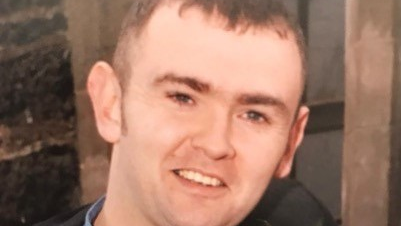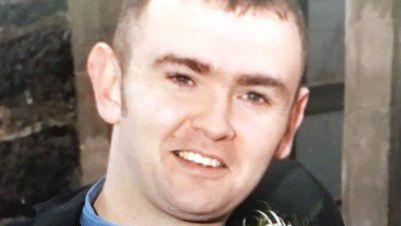Pathologist unable to determine cause of death in murder case

Damien Heagney's remains were found in a reservoir in 2022
- Published
A cause of death for Damien Heagney, whose remains were found in 2022, cannot be found "due to decomposition and dismemberment", a pathologist has said.
On 10 August 2022, Mr Heagney's dismembered remains were recovered in two packages from Cappagh Reservoir near Pomeroy, County Tyrone.
Stephen Eugene McCourt, 41, of Riverview, Augher, is on trial for the murder but denies the charges.
Dr James Lynas told Dungannon Crown Court he was unable to ascertain the cause of Mr Heagney's death and identification was confirmed through dental and medical records.
Dr Lynas carried out CT scans on the two packages in which the remains were found, the first of which contained a human skull and three uppermost bones in the neck, along with two arms.
A metal fragment was lodged within the skull.
The second package held lower limbs, but the tops of the thigh bones were missing, where they would joint with the pelvis, having been "cut below the ball-and-socket joints".
On direct examination of the remains, Dr Lynas said: "Three wounds to the head and neck were consistent with from a typical household knife."
The court heard there were areas of possible bruising to the scalp and a number of lacerations.
"A defect in the skull contained a triangular material, possibly metal… There were also areas of triangular-shaped injuries to the left temple," he said.
Wounds on the arms were consistent with being caused by a blade, however it was not possible to say if some other marks were caused by injury or decomposition.
'Not available for examination'
Dr Lynas said the legs had a number of cuts and incisions.
He said some of these injuries were possibly caused by "prolonged or tightened" contact with the wire fencing in which the packages had been wrapped.
The court heard that Mr Heagney's head had no bruising "surrounding any defects to confirm they occurred during life".
Despite specialist examination, he said: "It was not possible to confirm or exclude brain injury due to severe decomposition."
The upper limbs "had been disarticulated and there were defects suggestive of stab wounds, however the possibly these were caused after death could not be completely excluded, the lower limbs had been dismembered".
He confirmed the greater torso area was "not available for examination".
Dr Lynas said: "All remains were in a similar state of decomposition and could have been in the water since Mr Heagney's disappearance however this cannot be stated with absolute certainty."
The trial continues.
Related topics
- Published19 March
